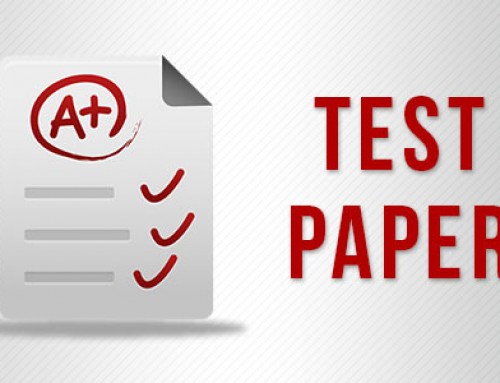Good afternoon class, today we will study the topic Vectors and 3D.
Vectors and 3D is a very important topic. Many questions come in JEE Mains, majorly of 3D. You
have to learn this topic very well. In this short lecture people talk about what kinds of questions
come in competition exams and how to solve them. So today we will start with Vectors and 3D,
Vectors and 3 dimensional geometry.
First I hope you people know about dot products of vectors. If there are two vectors, a vector and b
vector and angle between them is theta, then a dot b is equal to mod a into mod b into cos theta.
There are two vectors a vector and b vector then their dot product is mod a mod b cos theta. And
we also know that a plus b dot a plus b, what is this, this can also be written as a plus b whole square
which finally becomes mod a square plus mod b square plus twice of a dot b and many similar
properties of dot product, we know this and many similar properties of dot product.
Let us see how to use this in first question of your assignment. First question of your assignment, a
plus b plus c is equal to null vector. a vector plus b vector plus c vector whole square is also equal to
null whole square that is null. That is mod a square plus mod b square plus mod c square plus twice
of a dot b plus b dot c plus c dot a is equal to zero. Mod a square is 25, mod b square is 16, mod c
square is 9 plus twice of a dot b plus b dot c plus c dot a is equal to zero. Hence a dot b plus b dot c
plus c dot a is equal to minus 25, minus 15 upon 2 that is minus 25. Hence modulus of this is equal to
25, answer of first question of your assignment 25. Very simple question based on dot product. a
plus b plus c is equal to null vector. a plus b plus c whole square is zero. Squaring both sides mod a
square plus mod b square plus mod c square plus twice of a dot b plus b dot c plus c dot a is equal to
zero. Hence a dot b plus b dot c plus c dot a is equal to minus 25. Hence mod of a dot b plus b dot c
plus c dot a is equal to 25.
Before starting with second question let us talk about in-center of the triangle, circle which is drawn
inside the triangle and which touches all three sides of triangle is called as in-circle, this circle is
called as in-circle. If position vectors of vertices of triangle are a vector, b vector and c vector, then
position vector of in center is I vector which is equal to BC times a vector plus AC times b vector plus
AB times c vector upon BC plus AC plus AB. In-center of triangle, if I is in-center of triangle and ABC
are vertices, position vectors of points ABC are a vector, b vector and c vector and position vector of
I is ivector, in-center is I vector, then I vector can be found by opposite sides, from each vector the
position vector multiply it with the length of the opposite side and then add it upon the length of all
the three sides, upon perimeter of triangle then we get the in-centre. Is this clear? Very good.
See, question number second is based on this thing only. If I is center of circle inscribed in a triangle
ABC, then we have been asked the value of this. Let us see, we know I vector is BC times a vector
plus AC times b vector plus AB times c vector divided by BC plus AC plus AB. Multiplying this and
simplifying we can see that it becomes BC times I vector minus a vector plus AC times I vector minus
b vector plus AB times I vector minus c vector is equal to zero. What is this? BC times AI vector plus
AC times BI vector plus AB times CI vector is equal to zero. We have taken minus as common from all
three. What I write here is BC times IA vector plus AC times IB vector plus AB times IC vector is equal
to zero. Hence in this question it is written that the sum is equal to what and the answer is the sum
is zero that means equal to null vector. Please understand this again. We know position vector of in-
center can be determined by this formula, just multiplying taking BC common AC common and AB
common we got this, and it becomes BC times IA vector and AC times IB vector and AB times IC
vector is equal to zero or null vector. The value that we have to find out we got that directly, answer
is null vector, option a. Very good.
Let us move on to third question of your worksheet, okay read third question. AB vector and AC
vector are given we have to find length of median. AB vector and AC vector are given we have to find
length of median.



